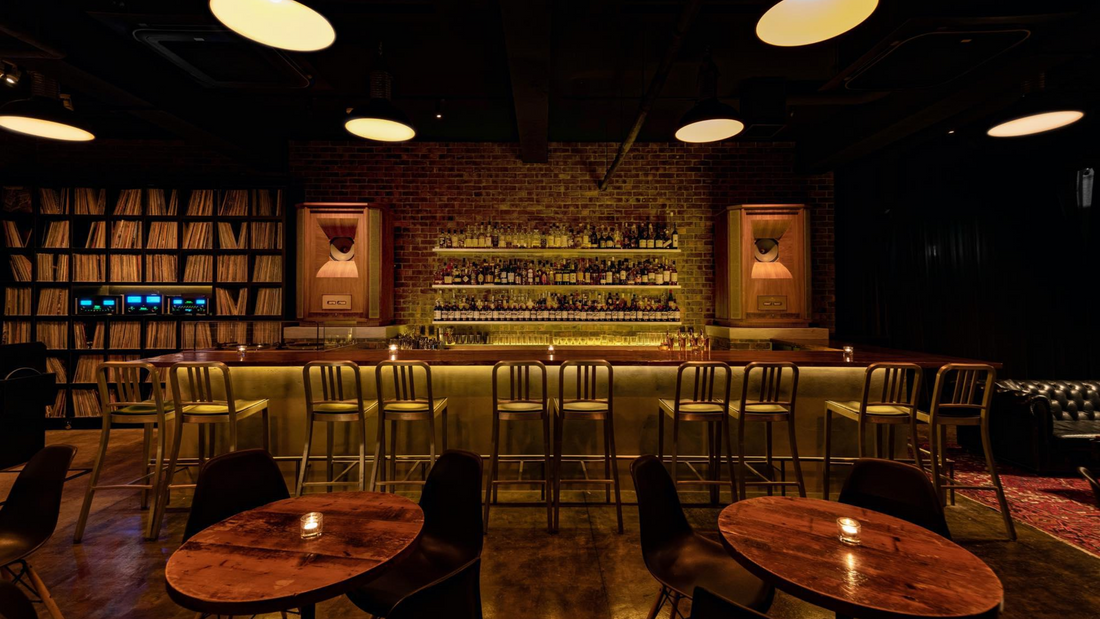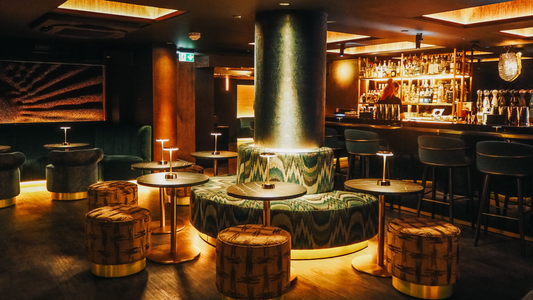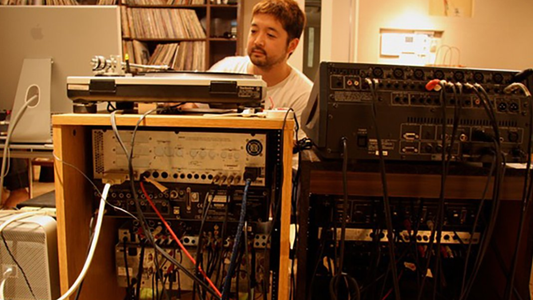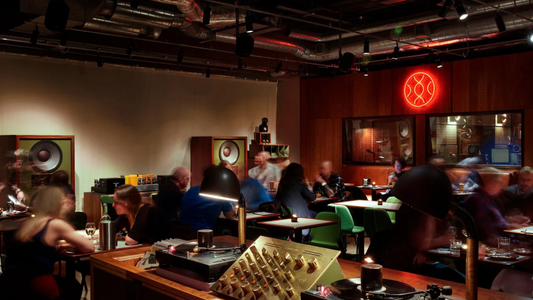
Beneath the Streets, A Pulse of Vinyl: The Music Bar Cave
By Rafi Mercer
New Listing
The Music Bar Cave is one of Shibuya’s subterranean sanctuaries for sound — explore more in our Tokyo Music Venues guide.
Venue Details:
Venue Name: The Music Bar Cave
Address: B1F, 1 Chome-19-5 Jinnan, Shibuya City, Tokyo 150-0041, Japan
Website: https://themusicbar.jp
Phone: +81 3-6455-3855
Spotify Profile: Not available
Shibuya has long been the axis around which Tokyo’s nightlife spins. Its crossing is a postcard image of the city — a tangle of neon, fashion, youth, and relentless movement. Yet just a block or two from that chaos, beneath the arterial stream of Meiji-dori, lies a space that feels as though it has been hollowed out to resist the noise above. The Music Bar Cave doesn’t shout its presence. It beckons, with the quiet confidence of a place that knows its worth. Step down into the basement and you enter another atmosphere altogether, where sound is given room to breathe, and where the rhythm of the city is reinterpreted, slowed, and re-centred through vinyl grooves and cocktails.
The first thing you notice is the architecture of immersion. The room curves gently, like the inside of its name — a cave, sculpted not from stone but from intention. The walls are dressed in wood and concrete, warm but raw, reflecting and absorbing in just the right measures. A line of stools circles the bar, the counter glowing under soft light, while behind it stands the altar: a carefully considered hi-fi system, with vintage turntables feeding into modern amplification, and a pair of speakers positioned not for spectacle but for presence. When a record spins here, the sound seems to settle into every crevice of the room, filling it without flooding it.
The collection is deep and unpredictable. Jazz, soul, Balearic oddities, ambient experiments, city pop reissues, cosmic disco — nothing feels off limits so long as it serves the room. What binds the selections is not genre but intent. You might hear a Coltrane ballad melt seamlessly into a dubwise cut from King Tubby, followed by a rare Japanese pressing of Tatsuro Yamashita that makes a whole table hum in recognition. The curators — a rotating cast of DJs, collectors, and friends of the bar — understand that listening is a journey, and they craft each set with that arc in mind.
And yet, unlike the stricter jazz kissaten that once defined Tokyo’s listening culture, The Music Bar Cave is no temple of silence. Conversation is welcome, laughter too. But always within the frame of the music. The sound system is powerful enough to dominate the room, yet balanced so that voices can live within it rather than fight against it. There is no need to shout; the music is loud enough to carry, but never so overwhelming that it demands obedience. This balance — between reverence and relaxation — is what makes Cave distinct. It is a place for those who want to hear, not just to be heard.
Hospitality here follows the same philosophy. The cocktail menu is curated as carefully as the playlists, leaning into seasonal Japanese ingredients and classic recipes reinterpreted with care. A shiso-leaf martini arrives crisp and green, echoing the fresh clarity of an early-evening ambient set. A smoked plum highball feels like a bassline made liquid, its resonance grounding the brighter notes of funk spinning overhead. Even the bar snacks — small plates of sashimi, hand-rolled bites of sushi, delicate tempura — are more than accompaniments; they are textures in the composition of the night.
The Cave has its origins in the Kurkku Fields collective, an eco-cultural project founded by Takeshi Kobayashi, a figure from Japan’s music industry with a deep commitment to sustainability and art. That heritage lingers in the details: the materials chosen for the bar’s interior, the care taken in lighting and acoustics, the sense that this is not just a business but a cultural offering. There is no sense of trend-chasing here; rather, it feels like an extension of Tokyo’s long history of spaces where music is allowed to take the lead.
Consistency is always the measure. Too many venues peak on opening night and then drift into predictability. Cave, by contrast, maintains its vitality through careful curation and community. The network of DJs is broad enough to ensure variety, yet tight-knit enough that there is a shared understanding of what the room demands. You never feel as though the system has been left to autopilot. Each night feels authored, specific, shaped.
It is in the small hours, when Shibuya above has thinned from its tidal wave of bodies into a trickle of stragglers, that Cave reveals its true magic. Down here, the tempo slows, records are given space to play all the way through, and conversations drift into the kind of philosophical terrain that only really makes sense at 2 a.m. The music, at this point, is less performance than companionship. A Curtis Mayfield cut eases you into the final drink. A Brian Eno piece sends you back up the stairs with your mind somewhere far away, even as your body re-enters the neon.
For a visitor, Cave represents a different face of Shibuya. This is not the brash exuberance of Love Hotel Hill, nor the commercial roar of Center Gai. It is something quieter, more deliberate. A reminder that within the crush of Tokyo’s most famous district, there are pockets carved out for reflection. The Music Bar Cave is one such pocket: a subterranean refuge where sound is not background, but foreground; where you come not just to drink, but to listen.
It will not be to everyone’s taste. Those seeking volume and spectacle might find it subdued. Those who want to dance until dawn may feel constrained. But for the listener who understands that music is best savoured, who wants to hear the brush of a snare as clearly as the crackle of vinyl, Cave is a haven.
It is not perfect — few venues are. The system, while precise and powerful, lacks some of the warmth of Tokyo’s most venerable kissa. The acoustics can be challenged when the room is overly full. And the balance between conversation and listening is a fragile one, dependent on the night’s crowd. But these are quibbles more than flaws, reminders that listening bars are living organisms, shaped as much by their patrons as by their design.
What matters is that Cave holds to its principle: to provide a space where music and people meet with intention. That principle is evident in the way a bartender tilts their head in time to the beat as they pour, in the way the DJ pauses before cueing the next track, in the way strangers nod to one another across the bar as a groove settles in.
And when you climb the stairs back to the Shibuya night, neon and chaos rushing to meet you, you carry something with you. Not just the memory of what you heard, but the reassurance that in a city as loud as Tokyo, someone is still making space for true listening.
Explore More
See our Listening Bar Collection
Rafi Mercer writes about the spaces where music matters. For more stories from Tracks & Tales, subscribe or click here to read more.







